In a world increasingly conscious of health and wellness, the demand for high-quality juicers has surged. As the kitchen appliances sector continues to evolve, understanding the intricate dynamics of high-volume juicer production is crucial. This exploration delves into the data-driven insights, case studies, challenges, and solutions shaping the future of this dynamic industry.
Introduction to High Volume Juicer Production
High volume juicer production has become a cornerstone in the thriving health and wellness sector. As the demand for fresh, homemade juices continues to soar, manufacturers are striving to meet the ever-growing market needs. In this segment, we delve into the intricacies of high-volume juicer production, exploring the processes, challenges, and opportunities that define this dynamic field.
The production process for high-volume juicers involves a series of meticulous steps designed to ensure quality, efficiency, and scalability. From sourcing premium materials to implementing cutting-edge manufacturing techniques, each stage plays a crucial role in producing reliable and durable juicers that cater to consumers’ health-conscious lifestyles.
At the heart of high-volume juicer production is the material selection process. Manufacturers must choose materials that not only offer the necessary durability but also adhere to food safety standards. Aluminum, stainless steel, and BPA-free plastics are commonly used, each providing a unique set of benefits. Aluminum is lightweight yet sturdy, while stainless steel boasts corrosion resistance and a sleek finish. BPA-free plastics are essential for health-conscious consumers who seek non-toxic alternatives.
The assembly line is where the magic happens in high-volume juicer production. Automation and robotics have revolutionized the process, allowing for consistent quality and increased output. High-speed, precision machines handle the intricate tasks of cutting, shaping, welding, and painting. This automation not only speeds up production but also reduces errors and waste.
Quality control is paramount in high-volume juicer production. Stringent testing protocols are in place to ensure each unit meets the manufacturer’s high standards. This includes functional tests to check for proper operation, leak tests for durability, and safety checks to prevent any potential hazards. The meticulous attention to detail at this stage ensures that only the best juicers make it to the shelves.
As the demand for high-volume juicers surges, so does the pressure to reduce lead times. Enter the concept of 48-hour quoting. This fast-track service allows customers to receive a detailed quote and production timeline within just two days. By streamlining the quoting process, manufacturers can offer more competitive pricing and shorter delivery times, a significant advantage in the dynamic market.
Understanding market trends is vital for any business looking to succeed in high-volume juicer production. Consumer preferences are shifting towards more powerful and versatile juicers, with features like dual-speed settings and ease of cleaning becoming increasingly popular. Staying attuned to these trends enables manufacturers to innovate and adapt, ensuring their products remain relevant and appealing to the health-conscious consumer.
Supply chain management is another critical aspect of high-volume juicer production. Efficient logistics and inventory management are essential to maintain a smooth production flow. Collaborations with reliable suppliers and distribution partners are key to ensuring that raw materials are always on hand and finished products reach the market promptly.
Despite the benefits of high-volume production, challenges do arise. The industry faces fluctuating raw material prices, environmental concerns over plastic use, and the need for constant innovation to stay ahead of competitors. However, these challenges are often met with creative solutions, such as sourcing sustainable materials, investing in green energy, and developing cutting-edge juicing technology.
The future of high-volume juicer production is bright, with an increasing focus on health and wellness. As more people recognize the benefits of fresh juices in their diet, the market is poised for further growth. Manufacturers that embrace innovation, sustainability, and efficient production practices will be well-positioned to capitalize on this expanding market.
In conclusion, high-volume juicer production is a complex yet rewarding industry. It requires a combination of precise manufacturing, rigorous quality control, and strategic business practices. By staying abreast of market trends, adapting to challenges, and investing in continuous improvement, manufacturers can produce high-quality juicers that meet the demands of today’s health-conscious consumers.
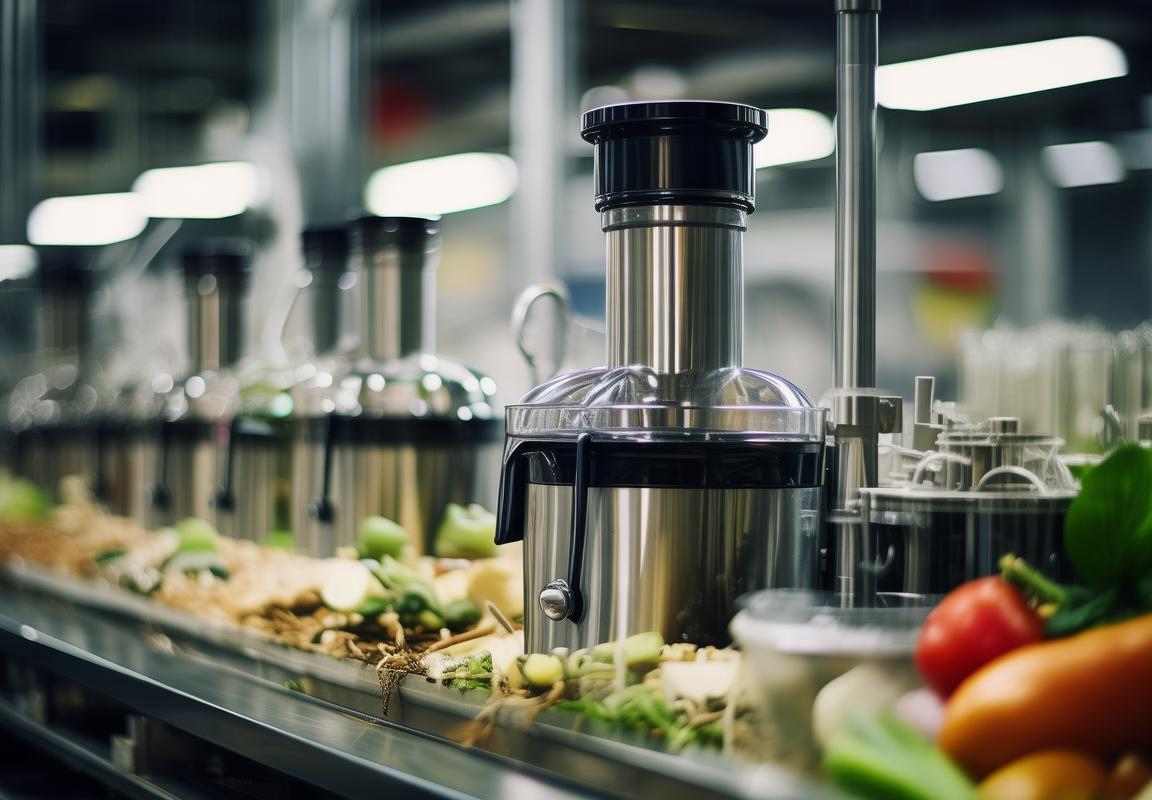
Market Dynamics in the Western Kitchen Appliances Sector
The Western kitchen appliances sector is a bustling marketplace, characterized by a diverse array of innovations and consumer preferences. With a strong emphasis on convenience and efficiency, the market is witnessing a shift towards smart and energy-efficient appliances.
Consumers in Western countries, particularly in the United States and Europe, are increasingly valuing health and wellness, which has significantly influenced the demand for juicers. This segment has seen a surge in popularity, with consumers seeking to incorporate fresh, homemade juices into their daily diets.
The market is also shaped by a growing awareness of environmental sustainability. Consumers are more likely to invest in appliances that are energy-efficient and have a lower environmental footprint. This shift has prompted manufacturers to focus on eco-friendly designs and materials.
Technology has become a key driver in the Western kitchen appliances sector. Smart appliances that offer connectivity and integration with smartphones and home automation systems are becoming more prevalent. These smart features not only enhance the user experience but also provide valuable data that can improve appliance performance and efficiency.
Moreover, there is a notable trend towards compact and multifunctional appliances. Consumers are seeking space-saving solutions that can perform multiple tasks, such as juicing, blending, and even making smoothies, all in one device. This demand is reflected in the design of new appliances that cater to these versatile needs.
Another important aspect of the market is the rise of premium appliances. As consumers become more discerning about the quality and functionality of their kitchen tools, there is a growing market for high-end products that offer superior performance and craftsmanship. Brands that can deliver on these expectations are finding a loyal customer base.
Retail distribution is also evolving in the Western kitchen appliances sector. Online sales have surged, offering consumers a wider range of products and competitive pricing. E-commerce platforms have become a key channel for manufacturers and retailers, allowing them to reach a broader audience and provide a more personalized shopping experience.
The competition within the market is fierce, with a multitude of brands vying for market share. This competition drives innovation and product differentiation, as companies strive to offer unique features and designs that stand out from the crowd. The result is a dynamic market that is constantly evolving to meet the changing needs of consumers.
Regulatory factors play a significant role in shaping the Western kitchen appliances sector. Stricter safety standards, energy efficiency regulations, and certifications for sustainability are all important considerations for manufacturers. Adhering to these regulations is not only mandatory but also a way for companies to demonstrate their commitment to quality and responsibility.
Consumer behavior is also influenced by marketing strategies and advertising campaigns. Brands are investing heavily in digital marketing, social media, and influencer partnerships to create buzz and engage with their target audience. The effectiveness of these campaigns can significantly impact sales and brand perception.
In conclusion, the Western kitchen appliances sector is marked by a blend of health-conscious consumers, technological advancements, and changing retail landscapes. The market’s dynamic nature requires constant adaptation and innovation to stay relevant and meet the ever-growing expectations of consumers.

The Role of Quoting in High-Volume Production
In the realm of high-volume production, the quoting process plays a pivotal role in ensuring smooth operations and customer satisfaction. It’s not just about providing a price; it’s a strategic tool that can make or break a deal. Here’s how quoting is integral to the high-volume production landscape.
Quoting serves as a bridge between manufacturers and customers, setting clear expectations right from the outset. It involves detailing the scope of work, the materials to be used, and the timeline for delivery. This transparency is crucial in high-volume production, where consistency and reliability are paramount.
The accuracy of a quote is paramount in high-volume scenarios. A misquoted price can lead to financial strain or, conversely, an overly aggressive quote might cause customers to question the quality of the product. Balancing cost and quality is an art, and the quote is the first step in this intricate dance.
In high-volume production, time is of the essence. Customers often require quotes within a very short timeframe, especially when they’re managing tight production schedules. The ability to deliver a quote quickly without compromising on detail or accuracy is a testament to the efficiency of the production process.
The quoting process also acts as a quality control mechanism. It forces manufacturers to think through every aspect of the production, from raw materials to labor costs. This foresight can lead to identifying potential issues before they arise, thus preventing costly delays.
In a competitive market, quoting can be a differentiator. A well-crafted quote that not only outlines the product specifications but also includes additional value-added services can set a company apart. It’s not just about the product; it’s about the overall customer experience.
Moreover, the quoting process can be a source of valuable insights. It allows manufacturers to understand market trends, customer preferences, and the competitive landscape. This knowledge can inform future product development and marketing strategies.
For high-volume production, scalability is key. A quote that can be easily adjusted to accommodate different volumes or customization requests is essential. This flexibility ensures that the production process can adapt to changing market demands without disrupting the workflow.
In the context of high-volume production, the quoting process is also about managing expectations. It’s not just about providing a price, but also about setting realistic timelines and delivery dates. This helps in managing customer satisfaction and building long-term relationships.
Another critical aspect of quoting in high-volume production is the integration with supply chain management. A well-structured quote takes into account the availability of materials, the capacity of the production line, and the logistics of shipping. This holistic view ensures that the production process runs seamlessly.
Lastly, the quoting process is a reflection of the manufacturer’s commitment to customer service. It’s an opportunity to showcase the company’s expertise, attention to detail, and dedication to meeting customer needs. A comprehensive and professional quote can make a lasting impression.
In summary, quoting in high-volume production is more than just a financial transaction. It’s a strategic process that touches on every aspect of the business, from product design to customer satisfaction. It’s a critical component that ensures that high-volume production runs smoothly, efficiently, and profitably.
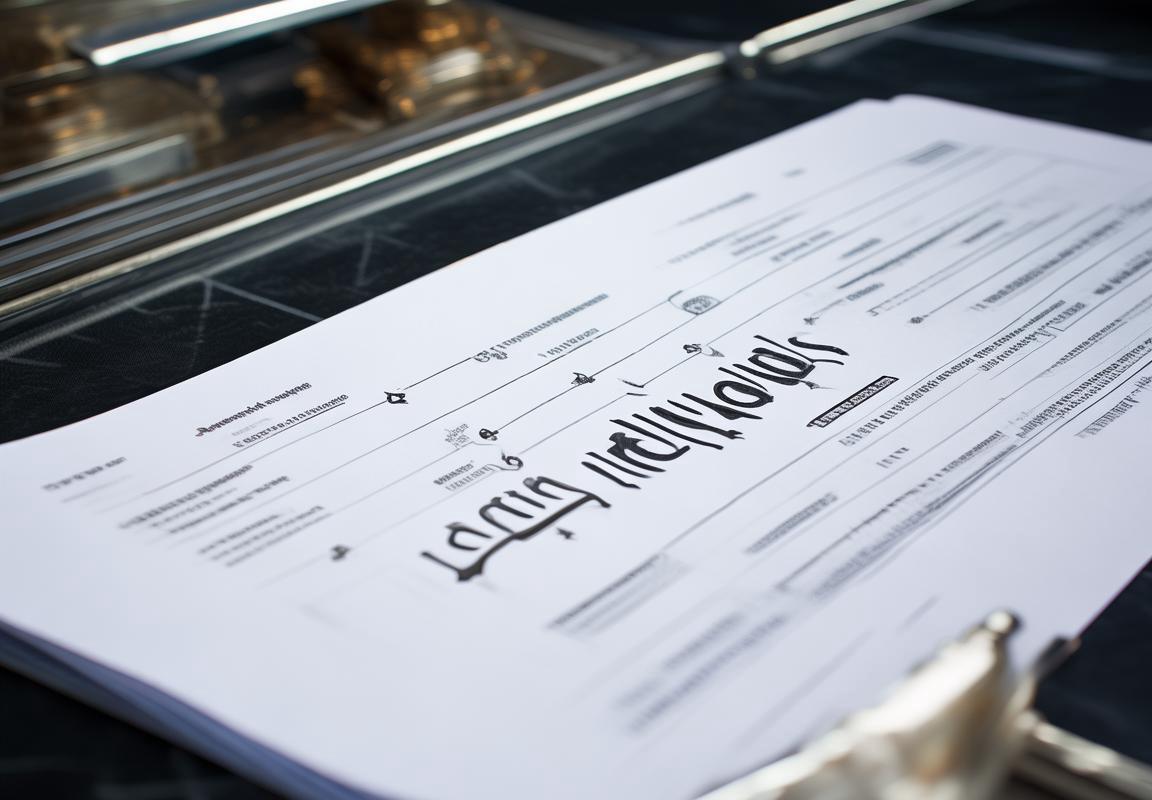
The 48-Hour Quoting Advantage
In today’s fast-paced business environment, the ability to provide quick and accurate quotes is a crucial factor in securing contracts and maintaining a competitive edge. The 48-hour quoting advantage refers to the strategic benefit of being able to deliver a detailed and precise quote within a mere two days. This approach can significantly impact various aspects of high-volume production, from customer satisfaction to operational efficiency. Let’s delve into the intricacies and advantages of this rapid quoting process.
The 48-hour quoting timeline is a testament to the agility and responsiveness of a company. By committing to such a short turnaround, businesses can demonstrate their commitment to customer service and their ability to adapt to the dynamic needs of the market. This swift action can be particularly advantageous in industries where time is of the essence, such as high-volume production.
One of the primary advantages of the 48-hour quoting advantage is the acceleration of the sales cycle. In high-volume production scenarios, where orders can be substantial and often urgent, a quick quote can mean the difference between securing a contract and losing out to a competitor. This rapid response time can be a deciding factor for customers who are in a hurry to move forward with their projects.
The efficiency of the quoting process is another critical aspect. With a streamlined system in place, companies can reduce the time spent on administrative tasks and focus more on the core aspects of their business. This efficiency is achieved through the use of advanced software and standardized processes that minimize errors and ensure that quotes are generated accurately and swiftly.
Accuracy is paramount in high-volume production, where mistakes can lead to costly delays and dissatisfied customers. The 48-hour quoting advantage ensures that quotes are meticulously prepared, taking into account all the necessary details such as specifications, pricing, and delivery timelines. This level of precision helps in avoiding miscommunication and misunderstandings that can arise from less detailed or rushed quotes.
Customer satisfaction is a direct outcome of the 48-hour quoting advantage. When customers receive a quote promptly, they feel valued and understood, which can foster a positive relationship between the customer and the vendor. This sense of urgency and attentiveness to the customer’s needs can be a significant differentiator in a crowded market.
Moreover, the 48-hour quoting advantage can also enhance a company’s reputation. Word-of-mouth referrals and positive reviews can spread quickly, especially in industries where time is a key factor. A company known for its ability to provide quick quotes is likely to be seen as a reliable and professional partner, which can lead to increased business opportunities.
In high-volume production, the ability to scale operations is essential. The 48-hour quoting advantage can be a catalyst for scaling, as it allows a company to handle a higher volume of inquiries without compromising on the quality of the service provided. This scalability is particularly important for businesses looking to expand their market share or enter new markets.
From a strategic perspective, the 48-hour quoting advantage can also help businesses stay ahead of market trends. By being able to respond quickly to customer demands and market changes, companies can pivot their production and offerings to meet emerging needs. This agility is a valuable asset in a landscape where innovation and adaptability are key to survival.
The use of technology plays a pivotal role in enabling the 48-hour quoting advantage. By leveraging advanced quoting software, companies can automate many aspects of the quoting process, from data collection to quote generation. This technology not only speeds up the process but also ensures consistency across all quotes, which is crucial in maintaining brand integrity.
Furthermore, the 48-hour quoting advantage can lead to cost savings. By reducing the time spent on each quote, companies can allocate their resources more effectively, potentially lowering labor costs and improving overall productivity. These savings can be reinvested into the business, further enhancing its competitive position.
In conclusion, the 48-hour quoting advantage is a multifaceted tool that can benefit high-volume production in numerous ways. It not only accelerates the sales cycle and enhances customer satisfaction but also improves operational efficiency and scalability. By embracing this rapid quoting process, businesses can position themselves as leaders in their industry, ready to meet the demands of a fast-paced market.

Data-Driven Insights into High-Volume Juicer Production
In the ever-evolving landscape of high-volume juicer production, data has become a cornerstone for informed decision-making. By delving into the wealth of information available, manufacturers can uncover valuable insights that drive efficiency and innovation. Let’s explore some of the key data-driven insights shaping the high-volume juicer production sector.
Consumer Behavior TrendsMarket research reveals a growing trend towards health-conscious living, with an increasing number of consumers seeking to incorporate fresh, nutritious juices into their diets. This shift has led to a higher demand for juicers, particularly those capable of handling large volumes of produce. Data on consumer preferences, such as preferred juicer types (e.g., centrifugal, masticating), features, and price points, is crucial for aligning production with market demands.
Production Efficiency MetricsAnalyzing production efficiency metrics can highlight areas for improvement. Data on production speed, yield rates, and downtime can help manufacturers optimize their processes. For instance, if data shows that certain models are producing a lower yield, engineers can investigate and address the issue, potentially leading to more efficient production lines.
Supply Chain PerformanceThe supply chain is a critical component of high-volume juicer production. Data-driven insights into supplier performance, lead times, and inventory levels can ensure a smooth flow of materials and components. By monitoring these metrics, manufacturers can reduce costs and minimize the risk of production delays.
Market Share AnalysisUnderstanding market share is essential for staying competitive. Data on market share can reveal which brands and models are leading the market, allowing manufacturers to position their products accordingly. Additionally, identifying the strengths and weaknesses of competitors can inform strategic decisions and product development.
Energy Consumption and SustainabilityWith sustainability becoming a key concern, data on energy consumption is increasingly important. By analyzing how much energy is used during production and by the juicers themselves, manufacturers can identify opportunities to reduce their carbon footprint. This includes optimizing production processes and developing energy-efficient juicer models.
Product Lifecycle ManagementData on product lifecycle stages, from design to disposal, can provide valuable insights. For example, understanding which models are most popular and which are on the decline can help manufacturers plan for new product introductions and phase out less successful models. This proactive approach can extend the lifecycle of successful products and reduce the risk of obsolescence.
Quality Control and Customer FeedbackData from quality control processes and customer feedback can be a goldmine for improving product design and performance. By analyzing defects, customer satisfaction surveys, and warranty claims, manufacturers can pinpoint areas for improvement and ensure that their high-volume juicers meet the highest standards.
Regulatory ComplianceRegulatory compliance is non-negotiable in the appliance industry. Data on safety standards, certifications, and compliance requirements can help manufacturers stay ahead of the curve. Staying informed about the latest regulations ensures that high-volume juicer production remains legally compliant.
Global Market TrendsGlobal market trends, such as shifts in dietary preferences and cultural norms, can significantly impact high-volume juicer production. Data on these trends allows manufacturers to anticipate changes and adapt their strategies accordingly. For example, the rise of veganism and plant-based diets has led to increased demand for juicers capable of processing nuts and seeds.
Innovation and Technology AdoptionData on the adoption of new technologies and innovations can drive the advancement of high-volume juicer production. By tracking which features and technologies are gaining traction in the market, manufacturers can invest in research and development to create cutting-edge juicers that appeal to consumers.
By harnessing the power of data, manufacturers in the high-volume juicer production sector can gain a competitive edge, improve operational efficiency, and ultimately deliver products that meet the evolving needs of consumers. The insights gleaned from data analysis are not just numbers on a page; they are the building blocks for a successful and sustainable business.
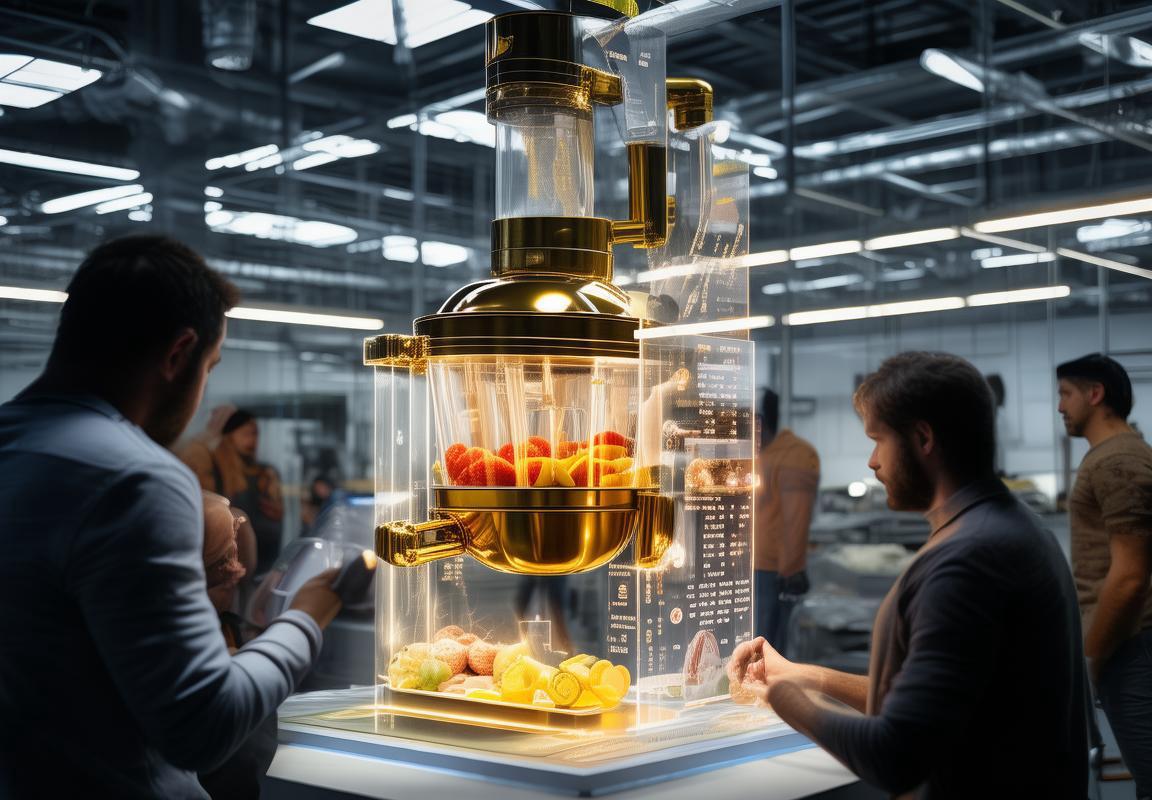
Case Studies: Successful High-Volume Juicer Production
In the realm of high-volume juicer production, several companies have stood out by mastering the art of large-scale manufacturing. Let’s delve into the case studies of a few that have achieved remarkable success in this field.
One such company is Juicelink, a global leader in juicer production. Their success can be attributed to their meticulous approach to market research and customer feedback. By analyzing trends and consumer preferences, they were able to design a line of juicers that catered to the needs of both health-conscious individuals and busy professionals. Their high-volume production line runs smoothly, thanks to a sophisticated system that ensures efficiency and quality control.
Another standout example is GreenPower Appliances, which has made a name for itself by integrating the latest technology into their juicer designs. Their innovative approach has not only captured the attention of consumers but also set a new standard in the industry. The company’s high-volume production process is optimized with state-of-the-art machinery and a highly skilled workforce. This combination allows them to maintain high output while still ensuring that each unit meets the stringent quality standards set by the company.
The story of PureStream Juicers is one of strategic expansion and relentless pursuit of excellence. Starting as a small, local manufacturer, they have grown into a major player in the global market. Their success is a testament to their commitment to continuous improvement. By investing in cutting-edge production facilities and training their staff extensively, PureStream has managed to scale up their production without compromising on the quality of their products.
One of the key factors in PureStream’s high-volume production success is their use of modular assembly lines. This system allows for easy scalability and flexibility, making it possible to adapt to changing demand without disrupting the production flow. Additionally, their inventory management system is highly efficient, ensuring that raw materials and components are always available when needed, reducing downtime and enhancing productivity.
In the competitive landscape of high-volume juicer production, EcoPure has carved out a niche by focusing on sustainable and eco-friendly practices. Their commitment to environmental stewardship has resonated with consumers who are increasingly conscious of the impact of their purchasing decisions. Despite the challenges of integrating eco-friendly materials and processes into their production line, EcoPure has managed to maintain a high output while also reducing their carbon footprint.
Their high-volume production is supported by a vertically integrated supply chain, which minimizes dependencies on external suppliers and allows for better control over quality and lead times. By sourcing materials locally and using recycled components where possible, EcoPure has not only reduced costs but also demonstrated their dedication to sustainability.
The case of Sunbeam Appliances illustrates how a strong brand identity can drive high-volume production success. Sunbeam has long been associated with quality and reliability, and their juicers are no exception. By leveraging their brand reputation, they have been able to enter new markets and expand their customer base rapidly. Their high-volume production lines are designed to handle large orders without compromising on the attention to detail that has become synonymous with the Sunbeam name.
One of the keys to Sunbeam’s success is their robust quality assurance process, which includes rigorous testing at every stage of production. This ensures that each juicer that leaves the factory meets the highest standards of performance and durability. Additionally, Sunbeam has invested in advanced robotics and automation to increase efficiency and reduce the risk of human error.
These case studies highlight the various strategies and techniques that have led to successful high-volume juicer production. From innovative design and technology to sustainable practices and strong brand identity, each company has found its unique path to success in a highly competitive market. By examining these examples, manufacturers can gain valuable insights into how to scale their operations while maintaining the quality and appeal of their products.
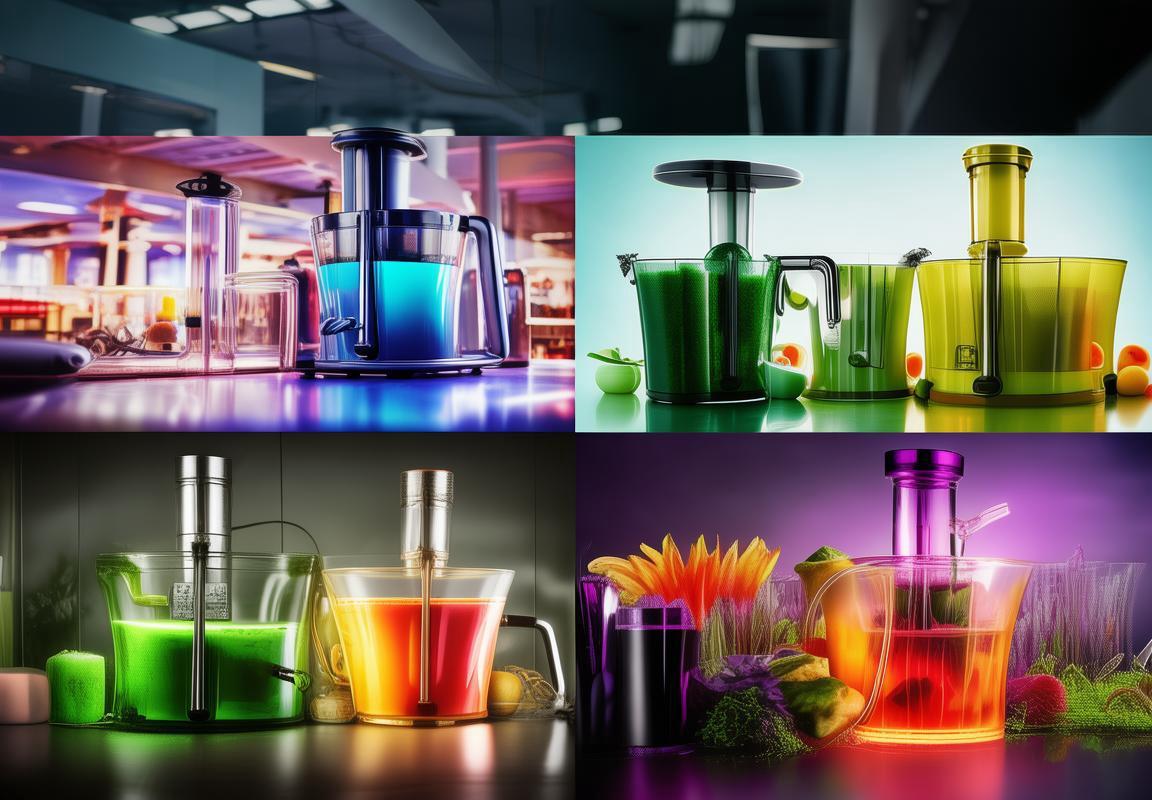
Challenges and Solutions in High-Volume Juicer Production
In the bustling landscape of high-volume juicer production, there are several challenges that manufacturers must navigate to ensure efficiency and quality. Let’s delve into some of these hurdles and the innovative solutions that have proven effective.
Balancing Quality and QuantityMaintaining the same level of quality in large batches can be a daunting task. Ensuring that each juicer meets the stringent standards expected by consumers is critical. Many companies have implemented rigorous quality control checks at various stages of production to guarantee consistency.
Automated InspectionsAutomated inspection systems have become a game-changer in high-volume production. These systems can quickly scan each juicer for defects, reducing the risk of faulty products reaching the market. By integrating AI and machine learning, these inspections are becoming more precise and efficient.
Supply Chain ManagementManaging a complex supply chain is another significant challenge. Delays in raw material delivery or component shortages can halt production lines. Successful manufacturers have optimized their supply chains by using advanced inventory management software and forging strong relationships with reliable suppliers.
Customization vs. StandardizationWhile mass production often involves standardized products, the demand for customized juicers is on the rise. Balancing customization without slowing down production lines requires a flexible manufacturing approach. Some companies have adopted modular design principles, allowing for easier customization while keeping production lines running smoothly.
Resource AllocationHigh-volume production requires careful allocation of resources, including labor, equipment, and space. Overhead costs can soar if resources are not used efficiently. Successful companies often use data analytics to predict peak production times and allocate resources accordingly.
Energy EfficiencyThe production of juicers involves significant energy use. Ensuring energy efficiency is not only cost-effective but also environmentally responsible. Many manufacturers have invested in energy-efficient machinery and processes, such as LED lighting and variable-speed drives, to reduce their carbon footprint.
Employee Training and RetentionA skilled workforce is essential for high-volume production. However, training and retaining employees can be challenging, especially in roles that require precision and technical expertise. Some companies have created comprehensive training programs and offered competitive benefits to keep their staff motivated and knowledgeable.
Market ResponsivenessIn the fast-paced world of consumer electronics, being responsive to market demands is crucial. High-volume production requires the ability to quickly adapt to new trends and consumer preferences. Companies that have mastered this aspect often invest in agile manufacturing processes and maintain close communication with market research teams.
Regulatory ComplianceNavigating the regulatory landscape is a constant challenge for manufacturers. Different regions have varying standards for product safety and environmental impact. Staying compliant requires a dedicated compliance team that stays up-to-date with industry changes and ensures all products meet the necessary regulations.
Inventory ManagementEffective inventory management is key to avoiding stockouts or overstocking. High-volume production requires precise forecasting and inventory control. Some companies have implemented just-in-time (JIT) inventory systems to minimize waste and keep production flowing smoothly.
Sustainability InitiativesConsumers are increasingly concerned about sustainability, and manufacturers are responding by integrating eco-friendly practices into their production processes. This includes sourcing sustainable materials, reducing waste, and minimizing energy consumption.
Innovation and ResearchTo stay ahead of the competition, companies invest in research and development (R&D) to innovate their products and production methods. This constant push for innovation helps improve efficiency and allows manufacturers to offer new features and technologies that appeal to consumers.
In conclusion, while high-volume juicer production presents unique challenges, a combination of strategic planning, technological advancements, and a commitment to continuous improvement can lead to successful and sustainable operations. By tackling these challenges head-on, manufacturers can produce high-quality juicers that meet consumer expectations and industry standards.
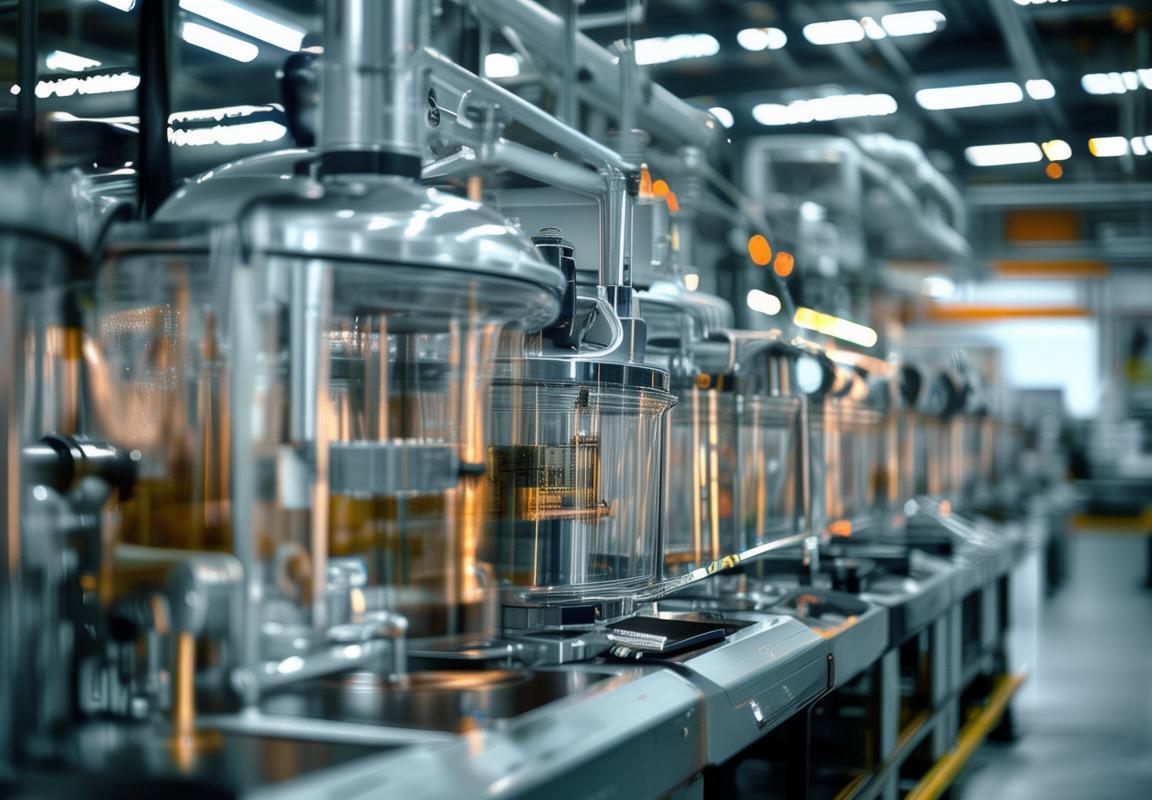
Future Outlook for High-Volume Juicer Production
The market for high-volume juicer production is witnessing a surge in demand, driven by health-conscious consumers and a growing preference for fresh, natural beverages. As we delve into the future outlook, several key trends and factors are shaping the landscape.
-
Technological Advancements Fuel EfficiencyInnovation continues to play a pivotal role in high-volume juicer production. Advances in juicer design, such as more efficient extraction systems and automated cleaning features, are reducing downtime and increasing productivity. These technological breakthroughs are not only boosting output but also ensuring that juicers can handle the high volumes required by commercial operations.
-
Sustainability Becomes a CornerstoneConsumers are increasingly aware of the environmental impact of their purchases. As a result, sustainability is becoming a core aspect of high-volume juicer production. Companies are investing in eco-friendly materials, energy-efficient manufacturing processes, and recycling programs to minimize their carbon footprint. This shift is likely to become more pronounced as regulations and consumer expectations evolve.
-
Market Expansion in Emerging RegionsWhile the Western kitchen appliances sector remains a significant market, there is a growing trend of market expansion in emerging regions. Countries like China, India, and Brazil are seeing a rise in health awareness, leading to increased demand for juicers. This expansion offers new opportunities for high-volume producers to tap into these burgeoning markets.
-
Customization and Personalization on the RiseConsumers today are not just looking for a product; they are seeking a tailored experience. High-volume juicer producers are responding by offering customizable options, such as adjustable pulp control and variable speed settings. This level of personalization not only caters to individual preferences but also opens up new revenue streams for manufacturers.
-
Health Trends Driving Product EvolutionThe health and wellness industry is a dynamic force that influences high-volume juicer production. Trends like the rise of cold-pressed juices and the use of superfoods have spurred the development of specialized juicers that can handle a wider range of ingredients. This focus on health-driven innovation is expected to continue, with producers looking to incorporate the latest research into their product lines.
-
Integration of IoT for Enhanced ProductivityThe Internet of Things (IoT) is poised to revolutionize high-volume juicer production. By integrating smart technology into juicer design, manufacturers can monitor and optimize production processes in real-time. This connectivity can lead to predictive maintenance, reducing downtime and improving overall efficiency.
-
Regulatory Compliance and Safety StandardsAs the industry grows, so does the importance of adhering to regulatory compliance and safety standards. High-volume juicer producers must ensure that their products meet stringent safety protocols, both to protect consumers and to avoid costly recalls. This focus on compliance is a necessary aspect of long-term success in the market.
-
Collaborations and Partnerships for GrowthTo stay competitive, high-volume juicer producers are forming strategic collaborations and partnerships. These alliances can range from research and development agreements with universities to distribution deals with global retailers. Such collaborations can accelerate innovation and expand market reach.
-
Economic Fluctuations and Market VolatilityEconomic fluctuations can impact the demand for high-volume juicers. Producers must be prepared for market volatility by diversifying their product lines and customer base. This resilience is crucial for navigating economic downturns and emerging from them stronger.
-
Long-Term Investment in Research and DevelopmentTo maintain a competitive edge, high-volume juicer producers are investing heavily in research and development. Continuous innovation is key to staying ahead of market trends and consumer demands. Long-term investments in R&D are expected to yield significant returns in the form of new products and technologies.
In conclusion, the future of high-volume juicer production is marked by a combination of technological advancements, sustainability concerns, market expansion, and a focus on health and wellness. As the industry evolves, producers must be adaptable, innovative, and committed to meeting the changing needs of consumers and regulatory bodies.
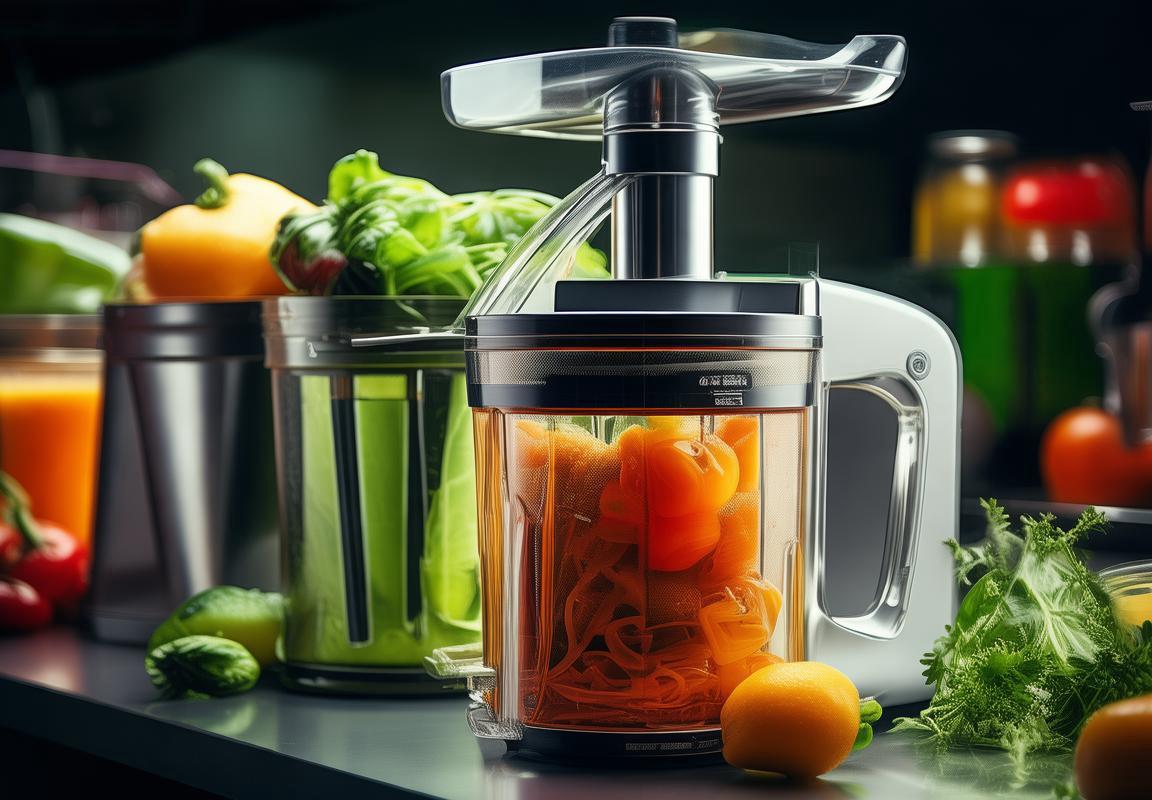
Conclusion
In reflecting on the intricate dance of high-volume juicer production, it’s clear that the industry is not without its complexities. From the meticulous design of juicers that cater to health-conscious consumers to the logistical challenges of mass production, each step in the process is a testament to the dedication and innovation that drives success. The journey from raw materials to finished product is a tapestry woven with threads of precision, efficiency, and customer satisfaction.
The rise of the juicing trend has been nothing short of meteoric, and with it, the demand for high-volume juicers has surged. This surge has brought with it a wave of opportunities, but it has also exposed the industry to a myriad of challenges. The need for rapid prototyping and shortening lead times has become paramount, and the ability to adapt to market demands swiftly is a key differentiator.
Innovation has been at the forefront, with manufacturers pushing the boundaries of what’s possible in juicer design and functionality. From the integration of smart technology to the use of sustainable materials, the industry is not just keeping pace with consumer expectations but often setting the pace. However, this pursuit of innovation must be balanced with the need for reliability and durability, ensuring that the juicers that reach consumers are not just cutting-edge but also robust.
Supply chain management has emerged as a critical factor in high-volume juicer production. The ability to source materials efficiently, manage inventory, and maintain a seamless flow of goods is crucial. Companies that have mastered this aspect of their operations have found that it not only reduces costs but also enhances their ability to respond to market fluctuations.
Quality control is another area where the industry has had to evolve. With high production volumes, ensuring that each unit meets stringent quality standards is no small feat. Advanced testing procedures, rigorous quality assurance protocols, and a focus on continuous improvement have become integral to maintaining a high level of product excellence.
The impact of sustainability cannot be overstated. As consumers become more environmentally conscious, the industry is under pressure to adopt greener practices. This shift is not just about reducing waste; it’s about redefining the very essence of what it means to produce a high-volume juicer. From the materials used to the manufacturing process, sustainability is becoming a cornerstone of the industry’s future.
The future of high-volume juicer production is bright, but it is also complex. As the market continues to grow, so too does the competition. New entrants are bringing fresh ideas and technologies to the table, and established players are constantly seeking to innovate and maintain their market share. This dynamic environment necessitates a strategic approach to business, one that combines agility with foresight.
The rise of e-commerce has also reshaped the landscape. Consumers now have access to a wider variety of products from around the world, and the convenience of online shopping has changed how they interact with brands. This shift has prompted manufacturers to reevaluate their distribution strategies and consider the importance of a strong online presence.
In conclusion, the high-volume juicer production industry is a dynamic and evolving sector. It is characterized by rapid technological advancements, intense competition, and a consumer base that is more discerning than ever. Despite these challenges, the industry is poised for continued growth, driven by a relentless pursuit of innovation, a commitment to quality, and a focus on sustainability. As the industry continues to adapt and thrive, it is clear that the future holds great promise for those who can navigate its complexities with grace and foresight.